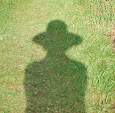Last month John treated Iain and I to a one day conference being held in Edinburgh to mark the 200th anniversary of the building of the Bell Rock Lighthouse off the east coast of Scotland.

It was hosted by the Royal Society and held in their beautiful Georgian building in George Street. We were required to arrive early and be settled in place as The Princess Royal (Princess Anne) was to start the day off with her Opening Address.
Well, it certainly gives the day a great sense of occasion when, on instruction, we all rise upon the entrance of Herself and her entourage! She is a seriously good sailor and patron of many worthy causes, including the Northern Lighthouse Board. And, with everything running strictly to time the whole process was repeated at the end of the morning as the dramatis personae exited stage left.

The speakers covered a variety of topics during the day. A couple of subjects left me curious to find out more. To that end I decided to pull together a couple of articles for our yachting organisation whose newsletter I produce.
I was greatly impressed with these excellent graphics: refer to Ian Cowe's Flickr website for stunning photos of Bell Rock Lighthouse. (My graphics are Wikipedia's.)
The first topic that I looked at was the shape that was decided upon for the structure:

"The concepts behind the building of this lighthouse, off Abroath in the North Sea in Scotland, are an example of empirically based engineering 200 years ago. The man behind the design was the Northern Lighthouse Board Chief Engineer, John Rennie and his Assistant or Resident Engineer, Robert Stevenson. In his report of 1805, Mr. Rennie felt that the tower should be higher than the Eddystone lighthouse and have a somewhat greater diameter in the base. Furthermore, the shape was to be cycloidal. “The slope he adopted for the base of the tower, as well as the curve of the building, fully answered his expectations... they presented comparatively small obstruction to the roll of the waves, which played round the column with ease.” [Smiles, S., Lives of the Engineers: Smeaton & Rennie, Chapter VII, John Murray, 1904, p. 338.]
A straight line is the shortest distance between two points but if you want a bead [in this case, a bead of water] to travel from one point to another in the fastest time, you need to make the line follow a cycloid path. Wherever any given beads of water fall on the side of this curve they will reach the bottom at the same time."




1 comment:
I didstinctly remember a phase I went through in my youth where all I wanted to drw was lighthouses...I've no idea why! LOL
Post a Comment